-
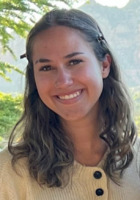 Alyssa Icke
Alyssa Icke
-
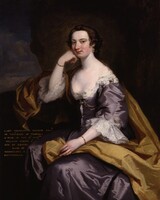 Lady Charlotte Finch (née Fermor)
Lady Charlotte Finch (née Fermor) This portrait of Lady Charlotte Finch (1725-1813), was completed by John Robinson (1715-1745). It depicts Lady Charlotte Finch as a woman with dark hair and grey eyes, with a lilac-colored dress with a white lace trim. She is also seen wearing a yellow cloak, pearls, and gold bracelets. She was unmarried at the time, and it is believed that this portrait was meant to attract potential suitors.
-
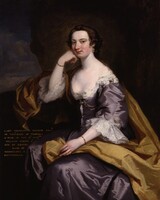 Lady Charlotte Finch (née Fermor)
Lady Charlotte Finch (née Fermor) This portrait of Lady Charlotte Finch (1725-1813), was completed by John Robinson (1715-1745). It depicts Lady Charlotte Finch as a woman with dark hair and grey eyes, with a lilac-colored dress with a white lace trim. She is also seen wearing a yellow cloak, pearls, and gold bracelets. She was unmarried at the time, and it is believed that this portrait was meant to attract potential suitors.
-
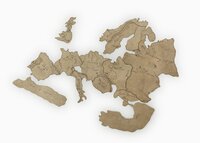 Puzzle
Puzzle This dissected map was possibly made by Lady Charlotte Finch.It was held in her personal puzzle cabinet.
-
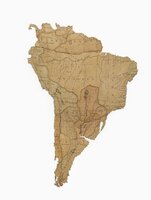 Puzzle
Puzzle This puzzle was made by Jean Palairet (1697-1774) and was a part of a simplified version of his "Atlas méthodique composé pour l'usage de son altesse sérénissime monseigneur le prince d'Orange et de Nassau, Stadhouder des Sept Provinces-Unies, etc. etc. etc." This version was commissioned by Lady Charlotte Finch and was held in her puzzle cabinet.
-
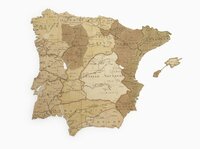 Puzzle
Puzzle This puzzle was made by Jean Palairet (1697-1774) and was a part of a simplified version of his "Atlas méthodique composé pour l'usage de son altesse sérénissime monseigneur le prince d'Orange et de Nassau, Stadhouder des Sept Provinces-Unies, etc. etc. etc." This version was commissioned by Lady Charlotte Finch and was held in her puzzle cabinet.
-
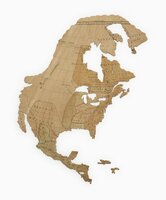 Puzzle
Puzzle This puzzle was made by Jean Palairet (1697-1774) and was a part of a simplified version of his "Atlas méthodique composé pour l'usage de son altesse sérénissime monseigneur le prince d'Orange et de Nassau, Stadhouder des Sept Provinces-Unies, etc. etc. etc." This version was commissioned by Lady Charlotte Finch and was held in her puzzle cabinet.
-
 Wallis's Key to the Old Testament
Wallis's Key to the Old Testament This puzzle depicts portraits of characters in the Old Testament. It was made by John Wallis, a publisher and puzzle maker at the time.
-
 Chronological Tables of English History for the Instruction of Youth
Chronological Tables of English History for the Instruction of Youth This puzzle was one of the initial puzzles that was not a dissected map. This puzzle, made by John Wallis (1745-1818), depicts every English monarch William I to George II, as well as a biography about each monarch.
-
 Puzzle
Puzzle This puzzle may have been drawn by Lady Charlotte Finch, and then cut to her direction. It was held in her personal puzzle cabinet, where she held puzzles meant to teach the children of George III.
-
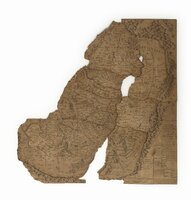 Cartes de la terre des hebreux ou israelites
Cartes de la terre des hebreux ou israelites This dissected map was commissioned by Lady Charlotte Finch, the royal governess to the children of George III. It was held in her personal puzzle cabinet.
-
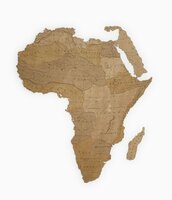 Puzzle
Puzzle This puzzle was made by Jean Palairet (1697-1774) and was a part of a simplified version of his "Atlas méthodique composé pour l'usage de son altesse sérénissime monseigneur le prince d'Orange et de Nassau, Stadhouder des Sept Provinces-Unies, etc. etc. etc." This version was commissioned by Lady Charlotte Finch and was held in her puzzle cabinet.
-
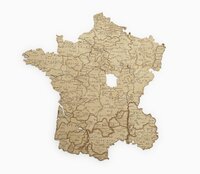 Puzzle
Puzzle This puzzle was made by Jean Palairet (1697-1774) and was a part of a simplified version of his "Atlas méthodique composé pour l'usage de son altesse sérénissime monseigneur le prince d'Orange et de Nassau, Stadhouder des Sept Provinces-Unies, etc. etc. etc." This version was commissioned by Lady Charlotte Finch and was held in her puzzle cabinet.
-
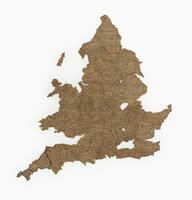 Puzzle
Puzzle This puzzle was commissioned by Lady Charlotte Finch, although the creator is unknown. It was held in her puzzle cabinet.
-
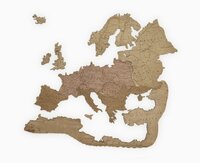 Puzzle
Puzzle This puzzle was made by Jean Palairet (1697-1774) and was a part of a simplified version of his "Atlas méthodique composé pour l'usage de son altesse sérénissime monseigneur le prince d'Orange et de Nassau, Stadhouder des Sept Provinces-Unies, etc. etc. etc." This version was commissioned by Lady Charlotte Finch and was held in her puzzle cabinet.
-
 Puzzle
Puzzle This puzzle is one of two in Lady Charlotte Finch's collection that was made by John Spilsbury. This puzzle would have been used to teach geography to the children of George III. Spilsbury is often credited with being the inventor of puzzles, although that was proven to be false. These early puzzles were created using paper that would be glued onto wood, and then cut into pieces from there.
-
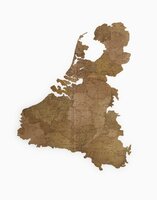 Puzzle
Puzzle This puzzle was made by Jean Palairet (1697-1774) and was a part of a simplified version of his "Atlas méthodique composé pour l'usage de son altesse sérénissime monseigneur le prince d'Orange et de Nassau, Stadhouder des Sept Provinces-Unies, etc. etc. etc." This version was commissioned by Lady Charlotte Finch and was held in her puzzle cabinet.
-
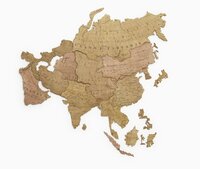 Puzzle
Puzzle This puzzle was made by Jean Palairet (1697-1774) and was a part of a simplified version of his "Atlas méthodique composé pour l'usage de son altesse sérénissime monseigneur le prince d'Orange et de Nassau, Stadhouder des Sept Provinces-Unies, etc. etc. etc." This version was commissioned by Lady Charlotte Finch and was held in her puzzle cabinet.
-
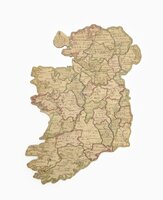 Puzzle
Puzzle This puzzle is one of two in Lady Charlotte Finch's collection that was made by John Spilsbury. This puzzle would have been used to teach geography to the children of George III. Spilsbury is often credited with being the inventor of puzzles, although that was proven to be false. These early puzzles were created using paper that would be glued onto wood, and then cut into pieces from there.
-
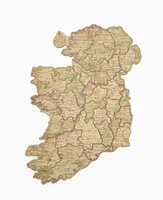 Puzzle
Puzzle This puzzle is one of two in Lady Charlotte Finch's collection that was made by John Spilsbury. This puzzle would have been used to teach geography to the children of George III. Spilsbury is often credited with being the inventor of puzzles, although that was proven to be false. These early puzzles were created using paper that would be glued onto wood, and then cut into pieces from there.
-
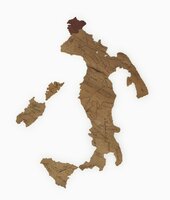 Puzzle
Puzzle This puzzle is believed to have been drawn by Lady Charlotte Finch, the royal governess to the children of George III. Found within her puzzle cabinet, it is believed that she would have drawn the map herself and had someone cut it for her, hence creating a dissected map for the use of the children.
-
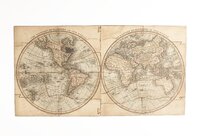 The World Dissected upon the Best Principles to Teach Youth Geography
The World Dissected upon the Best Principles to Teach Youth Geography This puzzle was made by publisher William Darton (1781-1854) in 1820. Puzzles, or dissected maps as they were called at the time, were growing in popularity as an educational tool. Children's knowledge of geography was starting to become more and more important in eighteenth and nineteenth century England, and puzzles became a fun way to get children engaged with it.
-
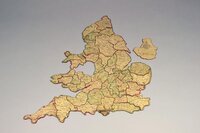 Dissected Puzzle
Dissected Puzzle This dissected map is one of the earliest made by John Spilsbury (1739-1769). He is often credited with being the inventor of puzzles, although that was proven to be false. These early puzzles were created using paper that would be glued onto wood, and then cut into pieces from there.
-
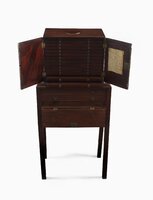 Puzzle Cabinet
Puzzle Cabinet This cabinet belonged to Lady Charlotte Finch. She was the Royal Governess for the fifteen children of George III. This cabinet held all of Finch's dissected maps that she would use to teach the children. Within the cabinet is a note that credits Finch as the inventor of dissected maps.
-
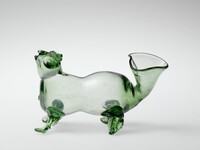 Bottle
Bottle This glass dog emerged from German glass-blowing techniques created in the seventeenth through nineteenth centuries. These techniques eventually made their way to the United States, mostly through glassblowers employed by Caspar and Richard Wistar. They employed many people to create various forms of glassware, including novelty glassware as displayed in the glass dog.
 Alyssa Icke
Alyssa Icke
 Lady Charlotte Finch (née Fermor) This portrait of Lady Charlotte Finch (1725-1813), was completed by John Robinson (1715-1745). It depicts Lady Charlotte Finch as a woman with dark hair and grey eyes, with a lilac-colored dress with a white lace trim. She is also seen wearing a yellow cloak, pearls, and gold bracelets. She was unmarried at the time, and it is believed that this portrait was meant to attract potential suitors.
Lady Charlotte Finch (née Fermor) This portrait of Lady Charlotte Finch (1725-1813), was completed by John Robinson (1715-1745). It depicts Lady Charlotte Finch as a woman with dark hair and grey eyes, with a lilac-colored dress with a white lace trim. She is also seen wearing a yellow cloak, pearls, and gold bracelets. She was unmarried at the time, and it is believed that this portrait was meant to attract potential suitors. Lady Charlotte Finch (née Fermor) This portrait of Lady Charlotte Finch (1725-1813), was completed by John Robinson (1715-1745). It depicts Lady Charlotte Finch as a woman with dark hair and grey eyes, with a lilac-colored dress with a white lace trim. She is also seen wearing a yellow cloak, pearls, and gold bracelets. She was unmarried at the time, and it is believed that this portrait was meant to attract potential suitors.
Lady Charlotte Finch (née Fermor) This portrait of Lady Charlotte Finch (1725-1813), was completed by John Robinson (1715-1745). It depicts Lady Charlotte Finch as a woman with dark hair and grey eyes, with a lilac-colored dress with a white lace trim. She is also seen wearing a yellow cloak, pearls, and gold bracelets. She was unmarried at the time, and it is believed that this portrait was meant to attract potential suitors. Puzzle This dissected map was possibly made by Lady Charlotte Finch.It was held in her personal puzzle cabinet.
Puzzle This dissected map was possibly made by Lady Charlotte Finch.It was held in her personal puzzle cabinet. Puzzle This puzzle was made by Jean Palairet (1697-1774) and was a part of a simplified version of his "Atlas méthodique composé pour l'usage de son altesse sérénissime monseigneur le prince d'Orange et de Nassau, Stadhouder des Sept Provinces-Unies, etc. etc. etc." This version was commissioned by Lady Charlotte Finch and was held in her puzzle cabinet.
Puzzle This puzzle was made by Jean Palairet (1697-1774) and was a part of a simplified version of his "Atlas méthodique composé pour l'usage de son altesse sérénissime monseigneur le prince d'Orange et de Nassau, Stadhouder des Sept Provinces-Unies, etc. etc. etc." This version was commissioned by Lady Charlotte Finch and was held in her puzzle cabinet. Puzzle This puzzle was made by Jean Palairet (1697-1774) and was a part of a simplified version of his "Atlas méthodique composé pour l'usage de son altesse sérénissime monseigneur le prince d'Orange et de Nassau, Stadhouder des Sept Provinces-Unies, etc. etc. etc." This version was commissioned by Lady Charlotte Finch and was held in her puzzle cabinet.
Puzzle This puzzle was made by Jean Palairet (1697-1774) and was a part of a simplified version of his "Atlas méthodique composé pour l'usage de son altesse sérénissime monseigneur le prince d'Orange et de Nassau, Stadhouder des Sept Provinces-Unies, etc. etc. etc." This version was commissioned by Lady Charlotte Finch and was held in her puzzle cabinet. Puzzle This puzzle was made by Jean Palairet (1697-1774) and was a part of a simplified version of his "Atlas méthodique composé pour l'usage de son altesse sérénissime monseigneur le prince d'Orange et de Nassau, Stadhouder des Sept Provinces-Unies, etc. etc. etc." This version was commissioned by Lady Charlotte Finch and was held in her puzzle cabinet.
Puzzle This puzzle was made by Jean Palairet (1697-1774) and was a part of a simplified version of his "Atlas méthodique composé pour l'usage de son altesse sérénissime monseigneur le prince d'Orange et de Nassau, Stadhouder des Sept Provinces-Unies, etc. etc. etc." This version was commissioned by Lady Charlotte Finch and was held in her puzzle cabinet. Wallis's Key to the Old Testament This puzzle depicts portraits of characters in the Old Testament. It was made by John Wallis, a publisher and puzzle maker at the time.
Wallis's Key to the Old Testament This puzzle depicts portraits of characters in the Old Testament. It was made by John Wallis, a publisher and puzzle maker at the time. Chronological Tables of English History for the Instruction of Youth This puzzle was one of the initial puzzles that was not a dissected map. This puzzle, made by John Wallis (1745-1818), depicts every English monarch William I to George II, as well as a biography about each monarch.
Chronological Tables of English History for the Instruction of Youth This puzzle was one of the initial puzzles that was not a dissected map. This puzzle, made by John Wallis (1745-1818), depicts every English monarch William I to George II, as well as a biography about each monarch. Puzzle This puzzle may have been drawn by Lady Charlotte Finch, and then cut to her direction. It was held in her personal puzzle cabinet, where she held puzzles meant to teach the children of George III.
Puzzle This puzzle may have been drawn by Lady Charlotte Finch, and then cut to her direction. It was held in her personal puzzle cabinet, where she held puzzles meant to teach the children of George III. Cartes de la terre des hebreux ou israelites This dissected map was commissioned by Lady Charlotte Finch, the royal governess to the children of George III. It was held in her personal puzzle cabinet.
Cartes de la terre des hebreux ou israelites This dissected map was commissioned by Lady Charlotte Finch, the royal governess to the children of George III. It was held in her personal puzzle cabinet. Puzzle This puzzle was made by Jean Palairet (1697-1774) and was a part of a simplified version of his "Atlas méthodique composé pour l'usage de son altesse sérénissime monseigneur le prince d'Orange et de Nassau, Stadhouder des Sept Provinces-Unies, etc. etc. etc." This version was commissioned by Lady Charlotte Finch and was held in her puzzle cabinet.
Puzzle This puzzle was made by Jean Palairet (1697-1774) and was a part of a simplified version of his "Atlas méthodique composé pour l'usage de son altesse sérénissime monseigneur le prince d'Orange et de Nassau, Stadhouder des Sept Provinces-Unies, etc. etc. etc." This version was commissioned by Lady Charlotte Finch and was held in her puzzle cabinet. Puzzle This puzzle was made by Jean Palairet (1697-1774) and was a part of a simplified version of his "Atlas méthodique composé pour l'usage de son altesse sérénissime monseigneur le prince d'Orange et de Nassau, Stadhouder des Sept Provinces-Unies, etc. etc. etc." This version was commissioned by Lady Charlotte Finch and was held in her puzzle cabinet.
Puzzle This puzzle was made by Jean Palairet (1697-1774) and was a part of a simplified version of his "Atlas méthodique composé pour l'usage de son altesse sérénissime monseigneur le prince d'Orange et de Nassau, Stadhouder des Sept Provinces-Unies, etc. etc. etc." This version was commissioned by Lady Charlotte Finch and was held in her puzzle cabinet. Puzzle This puzzle was commissioned by Lady Charlotte Finch, although the creator is unknown. It was held in her puzzle cabinet.
Puzzle This puzzle was commissioned by Lady Charlotte Finch, although the creator is unknown. It was held in her puzzle cabinet. Puzzle This puzzle was made by Jean Palairet (1697-1774) and was a part of a simplified version of his "Atlas méthodique composé pour l'usage de son altesse sérénissime monseigneur le prince d'Orange et de Nassau, Stadhouder des Sept Provinces-Unies, etc. etc. etc." This version was commissioned by Lady Charlotte Finch and was held in her puzzle cabinet.
Puzzle This puzzle was made by Jean Palairet (1697-1774) and was a part of a simplified version of his "Atlas méthodique composé pour l'usage de son altesse sérénissime monseigneur le prince d'Orange et de Nassau, Stadhouder des Sept Provinces-Unies, etc. etc. etc." This version was commissioned by Lady Charlotte Finch and was held in her puzzle cabinet. Puzzle This puzzle is one of two in Lady Charlotte Finch's collection that was made by John Spilsbury. This puzzle would have been used to teach geography to the children of George III. Spilsbury is often credited with being the inventor of puzzles, although that was proven to be false. These early puzzles were created using paper that would be glued onto wood, and then cut into pieces from there.
Puzzle This puzzle is one of two in Lady Charlotte Finch's collection that was made by John Spilsbury. This puzzle would have been used to teach geography to the children of George III. Spilsbury is often credited with being the inventor of puzzles, although that was proven to be false. These early puzzles were created using paper that would be glued onto wood, and then cut into pieces from there. Puzzle This puzzle was made by Jean Palairet (1697-1774) and was a part of a simplified version of his "Atlas méthodique composé pour l'usage de son altesse sérénissime monseigneur le prince d'Orange et de Nassau, Stadhouder des Sept Provinces-Unies, etc. etc. etc." This version was commissioned by Lady Charlotte Finch and was held in her puzzle cabinet.
Puzzle This puzzle was made by Jean Palairet (1697-1774) and was a part of a simplified version of his "Atlas méthodique composé pour l'usage de son altesse sérénissime monseigneur le prince d'Orange et de Nassau, Stadhouder des Sept Provinces-Unies, etc. etc. etc." This version was commissioned by Lady Charlotte Finch and was held in her puzzle cabinet. Puzzle This puzzle was made by Jean Palairet (1697-1774) and was a part of a simplified version of his "Atlas méthodique composé pour l'usage de son altesse sérénissime monseigneur le prince d'Orange et de Nassau, Stadhouder des Sept Provinces-Unies, etc. etc. etc." This version was commissioned by Lady Charlotte Finch and was held in her puzzle cabinet.
Puzzle This puzzle was made by Jean Palairet (1697-1774) and was a part of a simplified version of his "Atlas méthodique composé pour l'usage de son altesse sérénissime monseigneur le prince d'Orange et de Nassau, Stadhouder des Sept Provinces-Unies, etc. etc. etc." This version was commissioned by Lady Charlotte Finch and was held in her puzzle cabinet. Puzzle This puzzle is one of two in Lady Charlotte Finch's collection that was made by John Spilsbury. This puzzle would have been used to teach geography to the children of George III. Spilsbury is often credited with being the inventor of puzzles, although that was proven to be false. These early puzzles were created using paper that would be glued onto wood, and then cut into pieces from there.
Puzzle This puzzle is one of two in Lady Charlotte Finch's collection that was made by John Spilsbury. This puzzle would have been used to teach geography to the children of George III. Spilsbury is often credited with being the inventor of puzzles, although that was proven to be false. These early puzzles were created using paper that would be glued onto wood, and then cut into pieces from there. Puzzle This puzzle is one of two in Lady Charlotte Finch's collection that was made by John Spilsbury. This puzzle would have been used to teach geography to the children of George III. Spilsbury is often credited with being the inventor of puzzles, although that was proven to be false. These early puzzles were created using paper that would be glued onto wood, and then cut into pieces from there.
Puzzle This puzzle is one of two in Lady Charlotte Finch's collection that was made by John Spilsbury. This puzzle would have been used to teach geography to the children of George III. Spilsbury is often credited with being the inventor of puzzles, although that was proven to be false. These early puzzles were created using paper that would be glued onto wood, and then cut into pieces from there. Puzzle This puzzle is believed to have been drawn by Lady Charlotte Finch, the royal governess to the children of George III. Found within her puzzle cabinet, it is believed that she would have drawn the map herself and had someone cut it for her, hence creating a dissected map for the use of the children.
Puzzle This puzzle is believed to have been drawn by Lady Charlotte Finch, the royal governess to the children of George III. Found within her puzzle cabinet, it is believed that she would have drawn the map herself and had someone cut it for her, hence creating a dissected map for the use of the children. The World Dissected upon the Best Principles to Teach Youth Geography This puzzle was made by publisher William Darton (1781-1854) in 1820. Puzzles, or dissected maps as they were called at the time, were growing in popularity as an educational tool. Children's knowledge of geography was starting to become more and more important in eighteenth and nineteenth century England, and puzzles became a fun way to get children engaged with it.
The World Dissected upon the Best Principles to Teach Youth Geography This puzzle was made by publisher William Darton (1781-1854) in 1820. Puzzles, or dissected maps as they were called at the time, were growing in popularity as an educational tool. Children's knowledge of geography was starting to become more and more important in eighteenth and nineteenth century England, and puzzles became a fun way to get children engaged with it. Dissected Puzzle This dissected map is one of the earliest made by John Spilsbury (1739-1769). He is often credited with being the inventor of puzzles, although that was proven to be false. These early puzzles were created using paper that would be glued onto wood, and then cut into pieces from there.
Dissected Puzzle This dissected map is one of the earliest made by John Spilsbury (1739-1769). He is often credited with being the inventor of puzzles, although that was proven to be false. These early puzzles were created using paper that would be glued onto wood, and then cut into pieces from there. Puzzle Cabinet This cabinet belonged to Lady Charlotte Finch. She was the Royal Governess for the fifteen children of George III. This cabinet held all of Finch's dissected maps that she would use to teach the children. Within the cabinet is a note that credits Finch as the inventor of dissected maps.
Puzzle Cabinet This cabinet belonged to Lady Charlotte Finch. She was the Royal Governess for the fifteen children of George III. This cabinet held all of Finch's dissected maps that she would use to teach the children. Within the cabinet is a note that credits Finch as the inventor of dissected maps. Bottle This glass dog emerged from German glass-blowing techniques created in the seventeenth through nineteenth centuries. These techniques eventually made their way to the United States, mostly through glassblowers employed by Caspar and Richard Wistar. They employed many people to create various forms of glassware, including novelty glassware as displayed in the glass dog.
Bottle This glass dog emerged from German glass-blowing techniques created in the seventeenth through nineteenth centuries. These techniques eventually made their way to the United States, mostly through glassblowers employed by Caspar and Richard Wistar. They employed many people to create various forms of glassware, including novelty glassware as displayed in the glass dog.